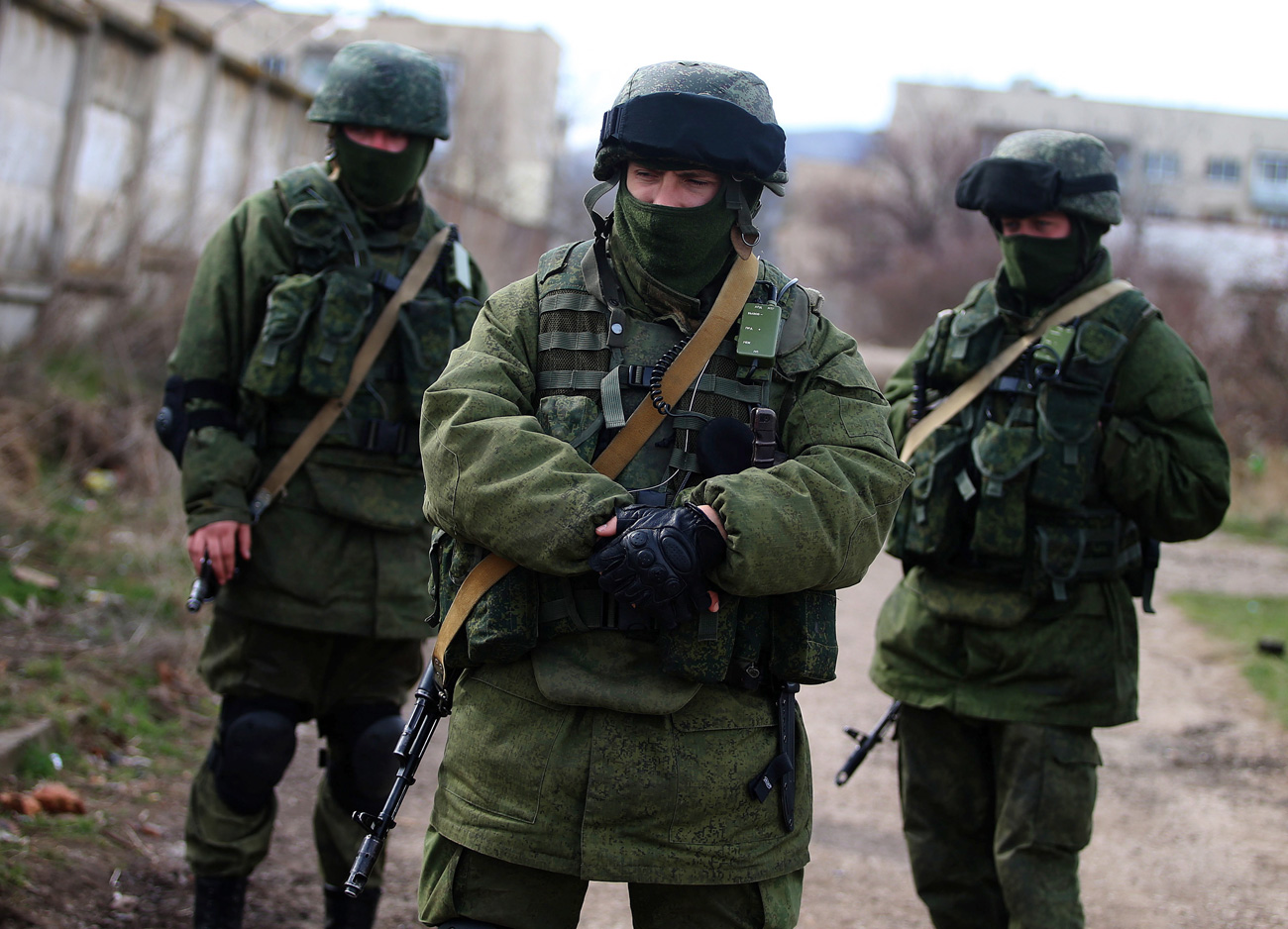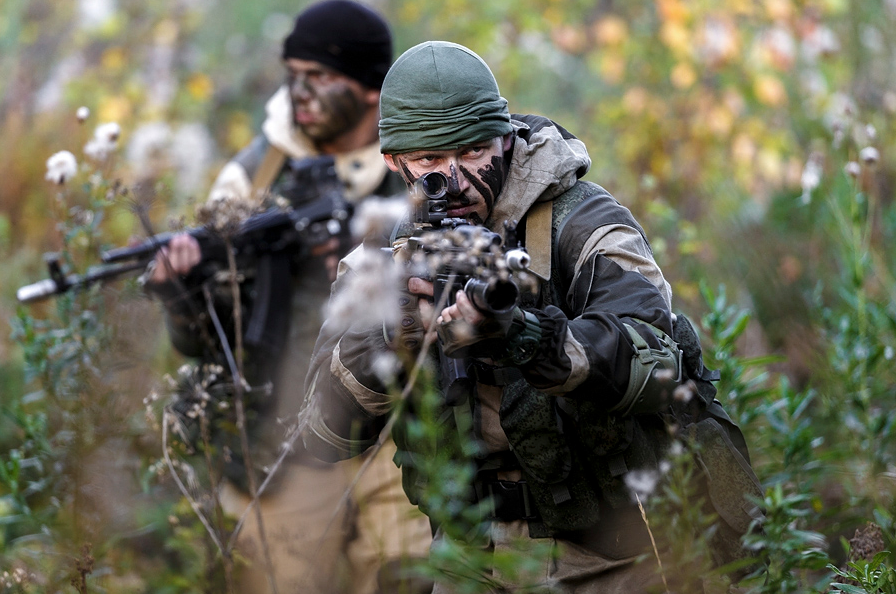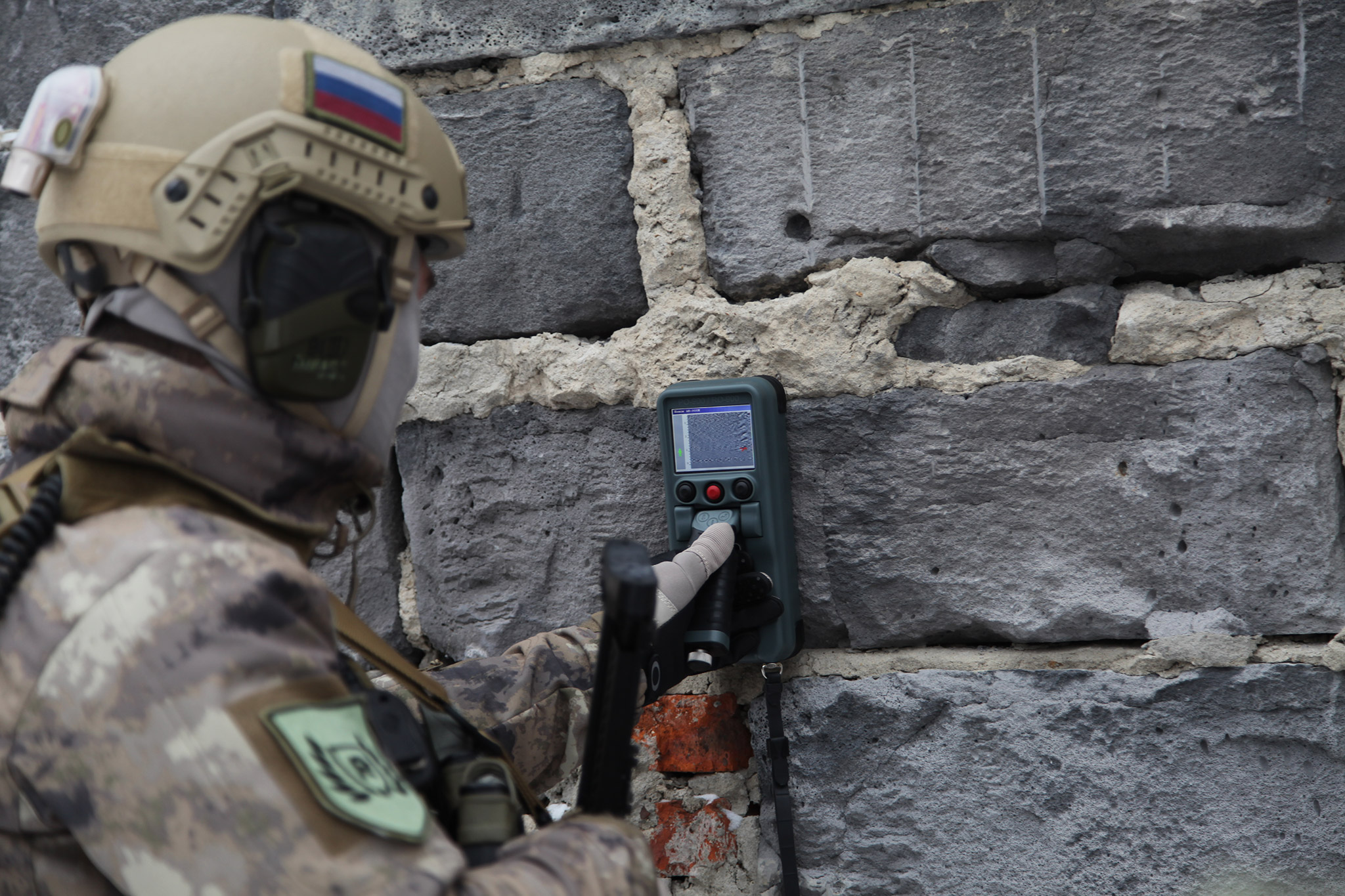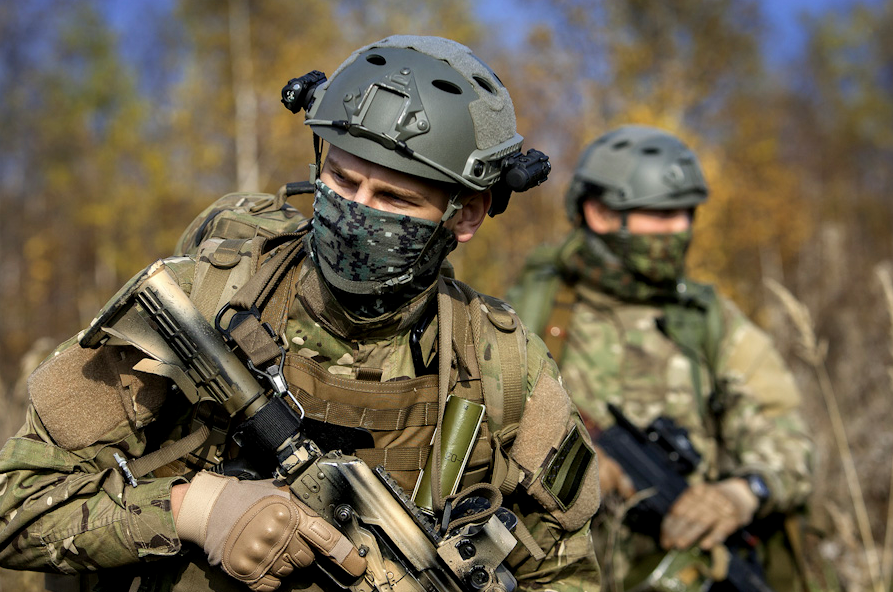New Russian special forces trace origins from outside

Masked servicemen stand near the territory of the 36th separate brigade of the Ukrainian Navy coastal defence at the naval base in Perevalnoe, Crimea in March 2014.
Stanislav Krasilnikov/TASSExtreme reform
Like all the Russian Armed Forces, the Special Purpose Forces have undergone major reforms over the past 10 years. The main innovation has been the creation of a unified management of special operations forces, directly under the Chief of Staff, which has allowed concentration of most of the existing potential under a single command.
The Special Operations Forces Command was created in 2009. Valery Gerasimov, the Armed Forces Chief of Staff openly stated in 2013 that the functioning of these forces was based on foreign experience.
According to the Wall Street Journal, citing sources in the US State Department, Nikolay Makarov, the Chief of General Staff, travelled to the United States in 2012, visiting the headquarters of the US Special Operations Command in Florida.
According to reports, officers of Russian special operations forces studied the practical organization of relevant structures in Italy, France, Germany, China, and several other countries. It is believed that the most influential was the French and German experiences. Common to all these leading NATO countries – was a separate multi-service Special Operations Forces (SOF) Command, directly subordinate to the senior leadership of the armed forces. Relevant departments were formed in the 1980s to the early 2000s, and Russia followed suit soon after that.
The special forces were not blindly copying the foreign experience. Despite the overall similarity in the functions and objectives of the SOF in different countries, Russia has its own peculiarities. Special tasks before of the Russian SOF include countering special forces of the enemy, which is not part of the Western doctrine.
The Western view is that special operation forces lose their advantages when used against forces similar in structure and preparation. Under this doctrine, general purpose forces often have a significant advantage in firepower, and are therefore more suited to counter the SOF of the enemy, than their own special forces formations.
The Russian doctrine is important from the political point of view – having officially and publicly proclaimed the possibility of using the SOF beyond the borders of the Russian Federation.
“We have created special operations forces and are preparing them for operations not only inside the country, but also abroad. The course of their combat training is continuously monitored by the on-duty Centre (Operational Control of the Armed Forces of Russia – note by Lenta.ru),” said Chief of General Staff Gerasimov at a meeting with his Chinese counterpart in March 2013. Soviet and Russian special forces have been used abroad before this but, in contrast to Western countries, this had never been officially confirmed.
Special Operations Forces in action
The first public demonstration of the new image of the Russian special forces – was the Crimean crisis in February and March 2014, where the SOF started operations to block Ukrainian military facilities on the peninsula. The quick and bloodless takeover of control of the most important military facilities, and selective blocking of communications systems led to the success of the operation as a whole. The same period was also the first time that public photos of Russian SOF soldiers started being circulated, especially at Belbek Airport near Sevastopol.
Although the use of Russian armed forces in Crimea was officially admitted, actions of the special forces were not commented upon. The first time they were mentioned was in connection with a rescue operation, after a Turkish fighter jet shot down the Russian Su-24 bomber in the northern part of the Latakia Province. They had to rescue not only the crew of the Su-24 (the pilot Lieutenant Colonel Peshkov was killed by gunmen while parachuting down), but also the crew involved in the rescue operation, when their Mi-8 helicopter was shot down, which had Russian marines on board (one of them, Alexander Pozynich, a sailor, was killed). The operation was conducted in collaboration with Syrian Army special forces and local pro-government militias.
In March 2016, the death in Syria of one SOF officer, FedorZhuravlev, was officially confirmed. According to Reuters, Zhuravlev was killed in November 2015. It was announced at his funeral that he was killed on a mission in the North Caucasus. In April 2016, during the battle for Palmyra, SOF Senior Lieutenant Alexander Prokhorenko was killed. According to available information, militants surrounded this officer, who was directing air attacks against them from the ground. To avoid capture, Lieutenant Prokhorenko directed Russian aviation to attack his own position.
In autumn 2016, the death of another SOF soldier in Syria was reported. In June 2016, Sergey Pechalnov, graduate of the Ryazan Airborne School, was seriously injured when he stepped on a landmine, and died a few days later in a Moscow hospital.
SOF units are being actively used in Syria, both in combat operations – including recognizance, guidance of aviation and active operations against the terrorist forces – and as security for humanitarian operations, including the escort of humanitarian aid and experts being sent to areas liberated from the terrorists.
However, the use of SOF forces outside of Russia is not limited to Syria. According to available data, special forces are being used against terrorists from North Africa to Afghanistan, as well as in some former Soviet republics in Central Asia. Just like in Syria, SOF operations in these areas are carried out using technical reconnaissance assets (primarily satellites and UAVs) and human intelligence.
In addition, with the new cooling of relations between Russia and the West, preparation for a possible confrontation against regular armed forces of the enemy has become a priority. These include all operations that were planned for Soviet special forces, but with typical additions. In addition to facilities of nuclear forces, headquarters, command centres and critical infrastructure sites, the goals of the SOF now include missile defence system facilities, objects and sections associated with the storage, maintenance and use of precision weapons, and a number of other objects.
Not only Aleppo?
When speaking about the actions of the Russian special forces in Syria, in addition to Aleppo, special operations forces have repeatedly been associated with the formation of Russian private military companies (PMC). At the same time, these seem to play two quite different roles – special operations forces perform very specific tasks, while the PMC appear to have been used as line infantry, where the Syrian Army itself lacked the needed strength. This, of course, does not rule out the physical masking of individual SOF units under the form of PMCs – and anyone else for that matter, up to the Islamist militants. With regard to private military companies as a whole, according to available information, the Russian political leadership has a rather negative view of this practice.
Given the events of the last three years, Russian special operations forces do exist, and operate as intended. It is hardly appropriate to rejoice in this fact – after all, the need to wage war is not too conducive to positive feelings, but if such a need arises, the effective, rapid and decisive use of the SOF is probably the best way to minimize the spent efforts. At the beginning of a campaign, if the political will exists, one can get by with a detachment of special forces with light weapons, but if setbacks do occur, then a regular full-fledged division will be needed.
First published in Russian by Lenta.ru.
All rights reserved by Rossiyskaya Gazeta.
Subscribe
to our newsletter!
Get the week's best stories straight to your inbox


